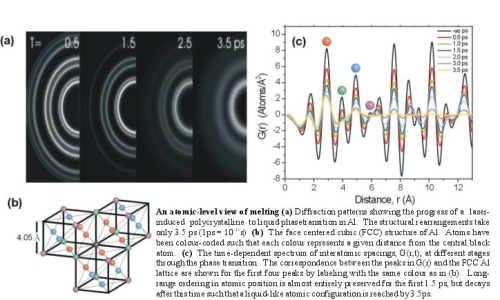
Associate Professor
Canada Research Chair in Ultrafast Science (Tier II)
Chemistry & Physics
B.A.Sc. Engineering Science, Physics (University of Toronto, 1997)
M.Sc. Physics (University of Toronto, 1998)
Ph.D. Physics (University of Toronto, 2004)
NSERC Postdoctoral Fellow (FOM - AMOLF Amsterdam 2004-2006)
NSERC Doctoral Prize (2005)
Contact Information
Office: Otto Maass 311 and Rutherford 221
Phone: (514)398-5853 or (514)398-5973
Email: Bradley.Siwick [at] McGill.CA
Lab: OM 25
Lab Phone: (514)398-3455
Web Page: Siwick Group Website
Research Themes
Chemical Physics
Research Description
Is it possible to resolve the elementary atomic motions that take place in molecules during the breaking and making of chemical bonds in the transition state region between reactant and product states? Or to make direct observations of the collective atomic motions leading to structural phase transitions in material systems as they take place? The experimental challenge associated with such measurements has often been referred to as the making of a "molecular movie" and requires that these systems be studied on both their natural length and time scales simultaneously. This can require the ability to obtain atomic level structural information on the timescale of a single vibrational period (~10-13 s). Research in my laboratory is focused on developing technologies that will allow complex transient structures of molecular and material systems to be determined at the atomic level. In particular, this involves engineering new instruments that unite the tools and techniques of electron microscopy with those of time-resolved (ultrafast) laser spectroscopy in novel ways. We are interested in studying photoinduced phase transitions in materials (order-disorder and order-order), where it will be possible to directly determine the changes in atomic configuration that accompany the system’s progress along the physical pathway between phases. These techniques will also be employed to try and understand structural dynamics in functional light-activated nanocomposite, nanostructured and organic materials. An additional area of research will be structural studies of extreme states of matter (i.e. materials under the conditions existing at the core of planets, or plasmas). Extreme conditions can be prepared transiently through interaction with intense laser pulses. Some projects will be conducted at the Advanced Laser Light Source (ALLS) facility being constructed in Varennes, Quebec, near Montreal – a world class $21M laser facility that will be capable of producing femtosecond pulses of light in a range of wavelengths from the mid-IR to X-ray with peak powers greater than 1014 W

Currently Teaching